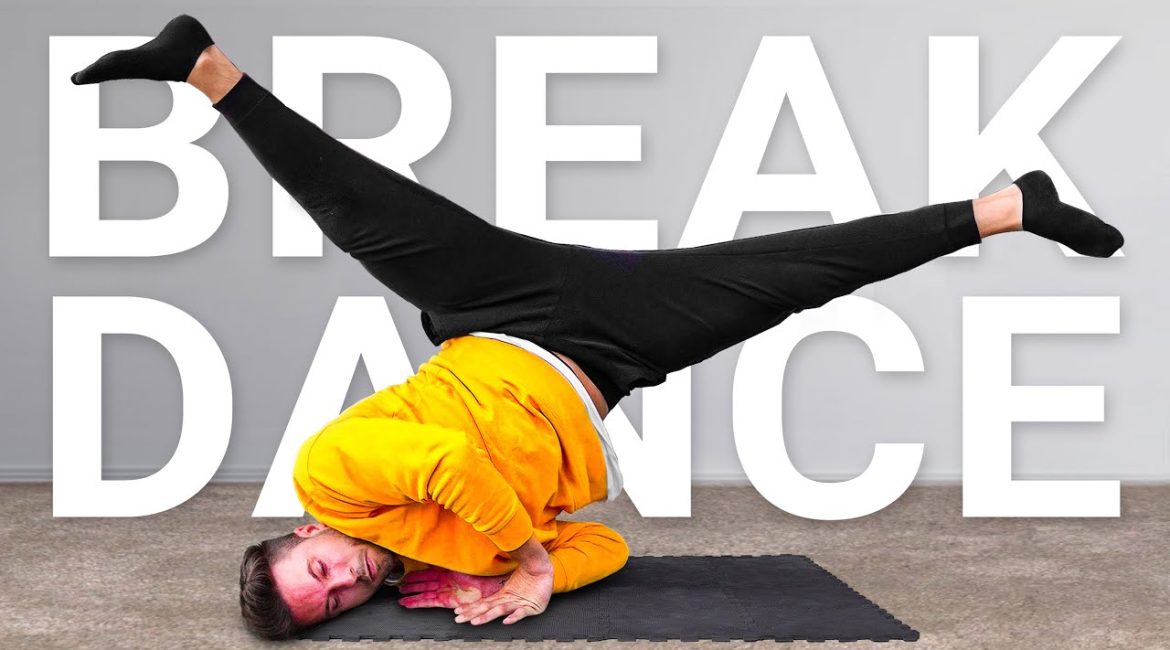Breakdancing. It’s a captivating art form that explodes with energy, rhythm, and gravity-defying moves. But for the uninitiated, the prospect of learning to breakdance can seem daunting. Can you really master those spins and freezes in just a week? Well, the answer isn’t a simple yes or no. It depends on your prior experience, your physical capabilities, and most importantly, your dedication.
Today, I’m taking you on a journey through my own experience learning the windmill, a fundamental breakdancing move known for its continuous spinning on the back. This isn’t a “how-to” guide, but rather a glimpse into the dedication, challenges, and small victories that come with tackling a new skill, particularly one as physically demanding as breakdancing.
Finding the Right Foundation (0:30)
My journey began with a naive assumption: all I needed was a space to practice. Wrong. In my initial enthusiasm, I attempted the windmill on various surfaces – indoors, on grass, even in the basement. Needless to say, the results were less than stellar. The lack of proper cushioning left my body battered and discouraged. This is a crucial lesson for any aspiring breaker – finding the right surface is paramount. A good quality dance mat or crash pad provides the necessary support to prevent injuries and allows you to focus on mastering the moves themselves.
The Elusive Collapse (1:17)
With a suitable practice space secured, I delved deeper. The windmill, as I soon discovered, breaks down into smaller components. The first hurdle I encountered was the collapsing technique – transitioning from the “top rock” (a foundational breakdancing stance) into the spinning motion. Tutorials made it seem simple: crouch, position your arms, and roll onto your back. In reality, it felt like my limbs were rebelling. My initial attempts resulted in uncontrolled rolls and a whole lot of pain. It became clear that mastering breakdancing requires a combination of strength, flexibility, and proper technique.
Day Two: A Step Backwards (2:27)
Day two wasn’t much better. Frustration crept in as I revisited the collapsing technique. My movements felt clumsy and uncoordinated. Disheartened, I questioned my ability to ever achieve that smooth, continuous spin. But then, a realization struck me. Progress in breakdancing, or any skill for that matter, isn’t always linear. There will be setbacks, days where your body feels stiff and uncooperative. The key is to persevere, to analyze your mistakes, and keep pushing forward.
Collapsing Refined (3:30)
Taking a deep breath, I decided to revisit the collapsing technique with renewed focus. This time, I paid closer attention to the online tutorials, dissecting every detail. I noticed a crucial point I had missed – actively pushing with my right arm during the collapse was essential for initiating the roll. Slowly, with each repetition, the movement began to feel more controlled. Frustration gave way to a sense of accomplishment as I finally grasped the collapsing technique.
The Importance of Hand Placement (5:38)
With some semblance of control over the collapsing technique, I moved on to the next challenge – hand placement. Here, proper positioning is crucial for maintaining balance and momentum during the spin. Tutorials emphasized the importance of tucking the right arm after collapsing to prepare for the “top rock” freeze at the end of the windmill rotation. This seemingly simple adjustment made a world of difference. My spins gained a sense of stability, and for the first time, the windmill started to feel less like a disjointed series of movements and more like a cohesive whole.
Day Three: The Light at the End of the Tunnel (9:07)
Day three dawned with a renewed sense of optimism. After countless practice sessions, the windmill was no longer an alien concept. My body felt stronger, more accustomed to the demands of the move. The collapsing technique flowed more smoothly, and my hand placement felt more natural. Most importantly, I was starting to connect the individual elements of the windmill – the collapsing technique, the spin, and the transition back to the “top rock” position.
While I wouldn’t say I mastered the windmill in three days, I had certainly come a long way. This experience taught me valuable lessons that extend far beyond breakdancing. It showed me the power of perseverance, the importance of proper technique, and the immense satisfaction that comes from conquering a challenging skill.
So, Can You Learn Breakdancing in 7 Days?
Can you master breakdancing in just a week? Probably not. But can you make significant progress, develop a foundation for further learning, and experience the joy of accomplishment? Absolutely. Breakdancing is a journey, not a destination.


Leave a reply